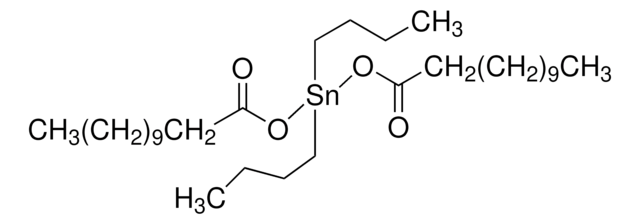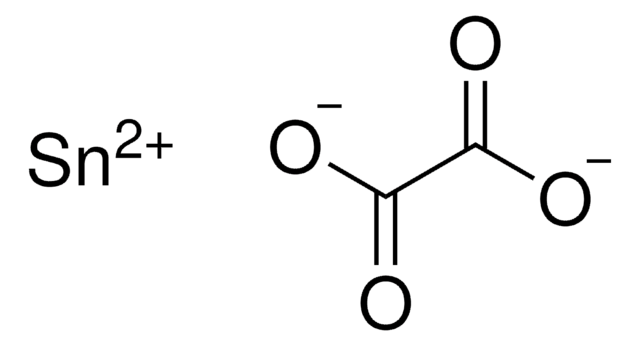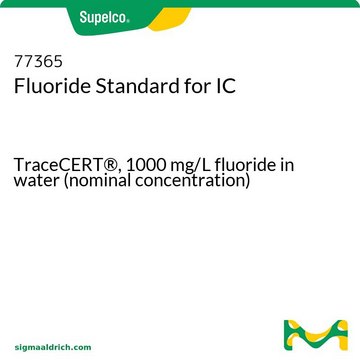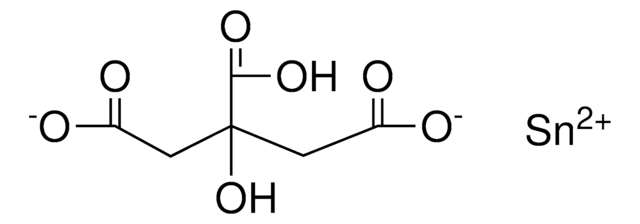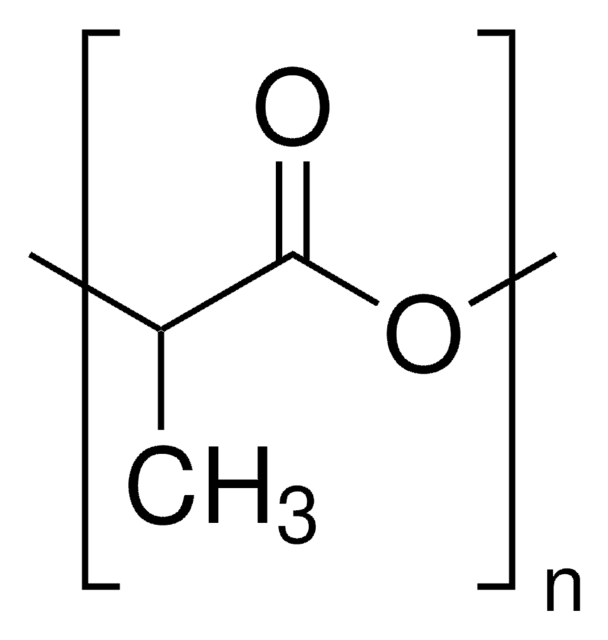S3252
Zinn(II)-2-Ethylhexanoat
92.5-100.0%
Synonym(e):
2-Ethylhexansäure Zinn(II)-salz, Zinn-2-Ethylhexanoat, Zinn-Octoat
About This Item
Empfohlene Produkte
Qualitätsniveau
Assay
92.5-100.0%
Eignung der Reaktion
core: tin
reagent type: catalyst
reaction type: Ring-Opening Polymerization
Brechungsindex
n20/D 1.493 (lit.)
Dichte
1.251 g/mL at 25 °C (lit.)
Kationenspuren
Na: ≤0.5%
SMILES String
CCCCC(CC)C(=O)O[SnH2]OC(=O)C(CC)CCCC
InChI
1S/2C8H16O2.Sn/c2*1-3-5-6-7(4-2)8(9)10;/h2*7H,3-6H2,1-2H3,(H,9,10);/q;;+2/p-2
InChIKey
KSBAEPSJVUENNK-UHFFFAOYSA-L
Suchen Sie nach ähnlichen Produkten? Aufrufen Leitfaden zum Produktvergleich
Anwendung
Signalwort
Danger
H-Sätze
Gefahreneinstufungen
Aquatic Chronic 3 - Eye Dam. 1 - Repr. 1B - Skin Sens. 1
Lagerklassenschlüssel
6.1C - Combustible acute toxic Cat.3 / toxic compounds or compounds which causing chronic effects
WGK
WGK 2
Flammpunkt (°F)
278.6 °F - closed cup
Flammpunkt (°C)
137 °C - closed cup
Persönliche Schutzausrüstung
Eyeshields, Gloves, type ABEK (EN14387) respirator filter
Hier finden Sie alle aktuellen Versionen:
Besitzen Sie dieses Produkt bereits?
In der Dokumentenbibliothek finden Sie die Dokumentation zu den Produkten, die Sie kürzlich erworben haben.
Kunden haben sich ebenfalls angesehen
Artikel
Atom transfer radical polymerization (ATRP) has emerged as one of the most successful synthetic techniques for the preparation of polymers with predetermined molecular weights, narrow molecular weight distributions, and high degrees of chain end functionalities.
ATRP polymerization, chain transfer agent, living polymerization, functional telechelic polymers
Find how atom transfer radical polymerization (ATRP) tools can be used for the synthesis of well-defined functionalized polymers.
Find how atom transfer radical polymerization (ATRP) tools can be used for the synthesis of well-defined functionalized polymers.
Unser Team von Wissenschaftlern verfügt über Erfahrung in allen Forschungsbereichen einschließlich Life Science, Materialwissenschaften, chemischer Synthese, Chromatographie, Analytik und vielen mehr..
Setzen Sie sich mit dem technischen Dienst in Verbindung.